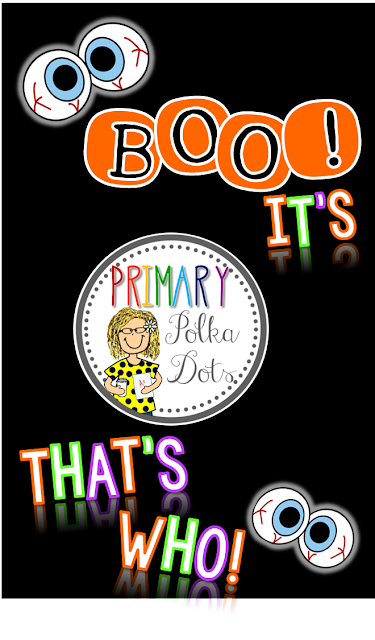Welcome friends to the
1st Annual 3rd, 4th and 5th Grades Halloween Blog Hop! We have some super
SPOOK-tacular TREATS just for
you!
If you
just knocked on
Amber's "door" from her blog,
Third Grade is Fun, then I hope you are pleasantly surprised to see me behind the "door".
I know you're here to collect some treats, and I hope you are excited about what I have for you today!
Keep reading so you can "knock" on the next door to find out who you will be visiting as you Trick-or-Treat on this blog hop!
First, I am excited to share with you my Halloween Fluency cards for FREE! Kids love them and they are a fun and different way to practice fluency and comprehension skills.
There are 4 sets of cards, and each set includes 4 steps to practicing fluency. Each set is intended for one week during the month.
To find out how to use these task cards in your classroom, watch my quick
YouTube video about these by clicking {
HERE}!
To snag up these *Halloween Blog Hoppers* exclusive freebie, click on the Trick-or-Treat bag below! {P.S. - Keep reading IF YOU DARE for even more goodies and PRIZES for you!}
Next, I want to share with you my
*favorite* Halloween activity to do with my kiddos! I've done this since my
first year of teaching and my kids have loved it each time! It's great way to bring in Playdoh (...
because who doesn't love Playdoh?!) in the upper grades as well as applying the skill of identifying
character traits of a main character in a story.
I present to you, my gorgeous goblins and sweet spooks,
Character Trait Tomb Stones.
In 4th and 5th grade, I used an abridged version of The Legend of Sleepy Hollow that I found free online years ago. We read the abridged version over the course of 2-3 days. We used lots of close reading skills to identify character traits, as well reviewing the skill of making inferences and identifying the parts of a plot.
{Some abridged versions of this story you may want to check out are HERE and HERE. Here is the Disney video free HERE.}
Of course, you could use any spooky book when doing this activity! It's so versatile!
After finishing the story and a few other activities focused on character traits and such, the students were given a little container of Playdoh.
I used
this pack from my TpT store after finishing the story with the students. This pack reviews character traits, plot, what an epitaph is, and how it is determined for each person. The pack includes reproducibles, directions, and a Powerpoint. The kids always had a great time reading this story and completing these activities.
For more information about this companion pack, click {HERE}.
Finally, I have a chance for you to win the ultimate Teacher Treat bag!
Want a chance to win more TREATS, OOZING with Halloween fun?!
Check out the TREATS (no tricks here) that are EERILY EXCITING in this giveaway!
This CAULDRON of TREATS features fabulous TpT products for grades 3rd-5th, as well as a TEACHER TREAT BAG that is to DIE for!
a Rafflecopter giveaway
Knock on the door to see who you will be Trick-or-Treating with next! Get your treat bag ready, I have a feeling you’ll need it again!
{Click on the door image below.}
{Happy Haunting from Door to Door on our Halloween Blog Hop! Be sure to keep looping to collect each treat for your goodie bag!}




















































